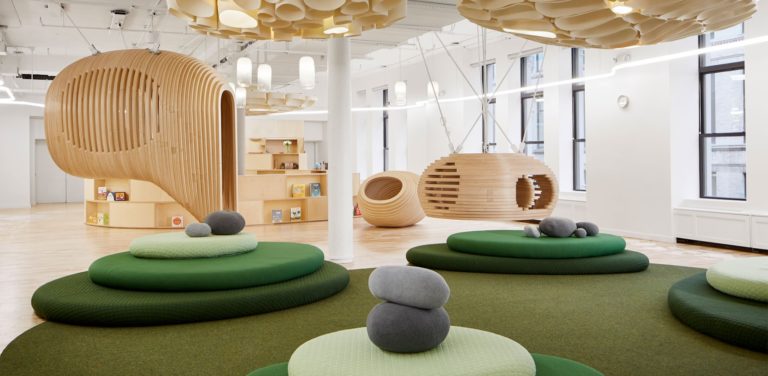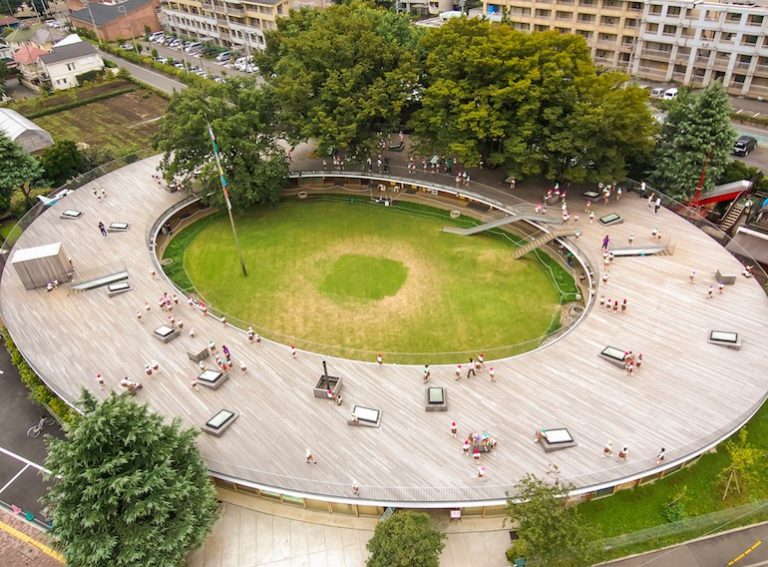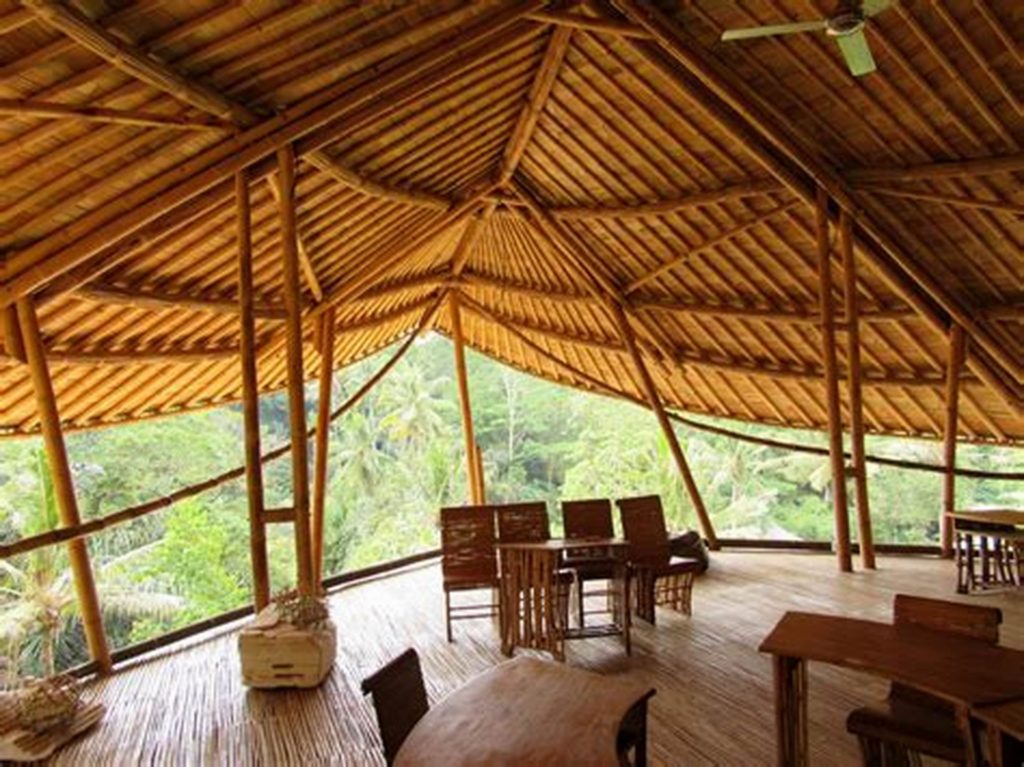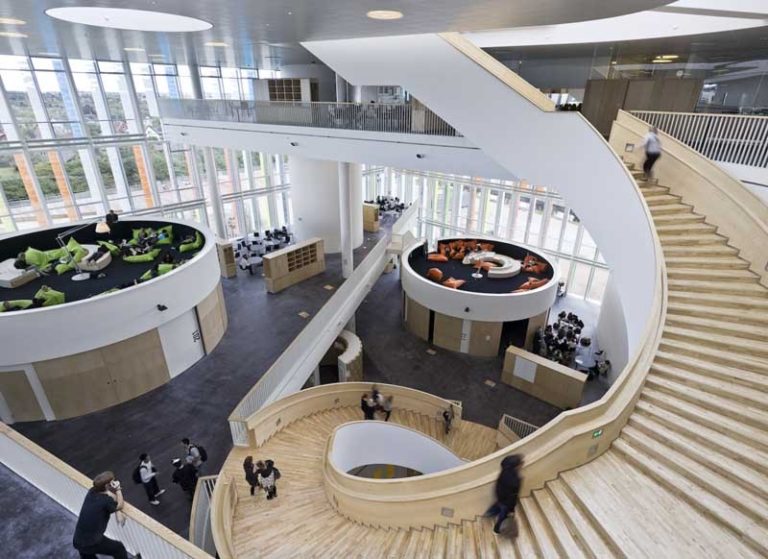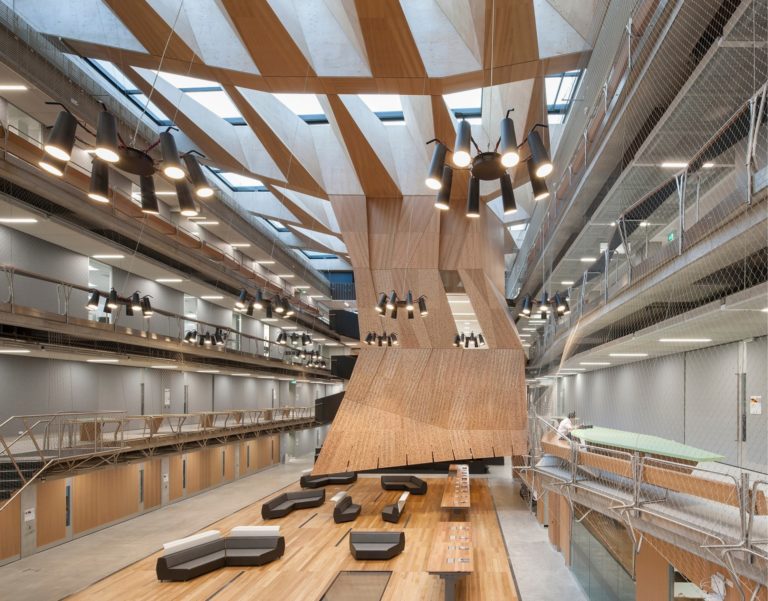Non-traditional design is still hard to find in the education sector. Classroom design has remained largely unchanged for decades. The traditional learning layout usually centres around long thin rows of desks, with teachers attempting to engage students using ‘chalk and talk’ style instructions.
Most teachers recognise that this is not the most effective use of anyone’s time. They themselves are uninspired by this approach. Yet making a change can be difficult to implement. It requires support from all echelons of an organisation. Lone teachers going out on a whim can be perceived as ‘different’. And not necessarily in a good way.
So how do we successfully break out of this rut? To begin with, it’s important to be making modifications for the right reason. Change, purely for the sake of it, is not valuable. Each and every teacher in the profession will have spent time modifying and attempting to improve their learning environment. And each and every teacher will have implemented changes that have had an instantaneous positive impact, and those that didn’t survive until the end of the school day. Teachers, often without realising, are constantly adapting and evolving with their environment, so it’s important to identify where and how the positive impact can be most successfully achieved.
A tricky element to overcome in the redesign process is the assessment of impact. The influence of change can be difficult to quantify. Sometimes, it is simply an improvement in the overall feeling of an environment. An enhanced feeling of safety and comfort in the learning space. And whilst on the surface this might prove tricky to quantify, it is in fact, easier than it appears to measure the effect. A student who feels more secure and comfortable in their surroundings will ultimately be more productive, therefore achieving a higher quality of work at a faster rate. Student results are much more closely aligned to the environment than is given credit for.
An often dominant factor in the design of a school is the cultural constraints by which educators are operating. Predetermined expectations are placed on a school purely through a cultural convention. It is important to keep an open mind and accommodate multifaceted teaching techniques, regularly reviewing the natural shift of the environment in which children are provided with.
A large portion of a school’s responsibility lies in equipping its students with the skills required to adapt to the world in which they will ultimately go out and seek employment. And it is a school’s job to ensure that the environment they create for learning does not stifle or hinder their pupil’s potential in the outside world. There is more than a hint of the unknown about what that future work environment will look like, so schools must be doing their best to upskill the students in their care. This can be achieved by shifting the educational focus to developing soft skills that allow children to succeed as adults of tomorrow, all supported by the learning environment in which they are immersed.
But what does this look like? How do we bravely break out from the mould dictated by years of convention and ritual? How can we ensure our schools are places that allow the students who occupy them to be architects of happy and productive workplaces?
We take a look at those educational settings that have dared to be different. Those who recognise the trappings of an ancient and outdated view of the education system. We have gathered together examples from different age phases around the world where child productivity, engagement and happiness have been placed at the centre of the learning environment. And the outcomes and impacts are startling.
Provision for early years
Naturally Learning (Cornwall, UK) – This is a group of nurseries with a difference, it is a learning space that centres all child initiated activities around nature and the environment.
Naturally Learning follows a ‘Montessori approach’. This allows engagement to be predominantly child led. The use of beautiful natural materials means that there is a strong emphasis on calm and soothing resources, whilst paired back learning spaces allow the children to connect with their surroundings.
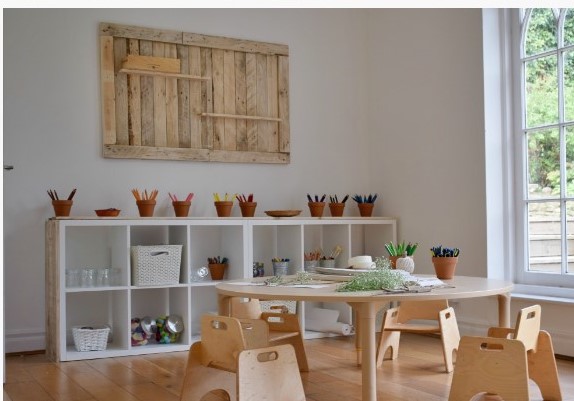
“Light, airy and open spaces are a feature of our nurseries, as are natural colours and furnishings. They help us create a calming, safe and secure space that allow the children to feel free, while at the same time enabling them to concentrate better when they need to. We aim to provide a stimulating, challenging environment which is a home away from home.”
WeGrow Kindergarten (New York City, USA) – This radical non-traditional ‘kindergarten’ allows learning without barriers – physical or otherwise. Creators and users of the space are encouraged to explore and have fun. The shapes and materials rooted in nature allow children to be tactile, constantly experimenting with their senses and rapidly developing through investigation of the surroundings.
Fuji Kindergarten, (Tokyo, Japan) – In this setting, the designers have deliberately set out to create an environment which is challenging, to encourage regular problem-solving.
Their mantra is that the effect of inconvenience is inefficiency, and that is what they would like the children to experience and overcome. Although they believe standalone skills can be taught, experience has to be gained, and their setting works hard to manufacture different situations designed to hone developmental milestones.
“Fuji Kindergarten is, in a manner, old-styled and non-automatic, purposely creating small inconveniences to make children feel a little bit of adversity. When children encounter inconvenience, they learn to problem-solve on their own. There is GROWTH where critical thinking and problem-solving is undertaken.
Primary age phase
Primary stage education is a crucial phase of development, during which children nurture fundamental capabilities of thinking. It is during these years that the neural pathways that encourage mental cognition should be honed and expanded. A non-traditional environment that supports these firing synapses should be easily adaptable and allow learning to take place both collaboratively and on an individual basis.
The Green School, (Ubud, Bali) – This has long been the gold standard in non-traditional educational spaces. On the ground, The Green School presents itself as a free-flowing space, working hard to firmly embed child-initiated learning, children are self-directed for much longer than in traditional educational settings, allowing the pupils to explore and express their interests and curiosities.
For balance, it is important to state that a non-traditional classroom doesn’t need to be deeply entrenched in the heart of the Indonesian jungle, miles away from a recognisable school. Sometimes, it is about making clever tweaks to guarantee a space is working at its best, thinking about how the children interact with the room so that they are the most productive they can be.
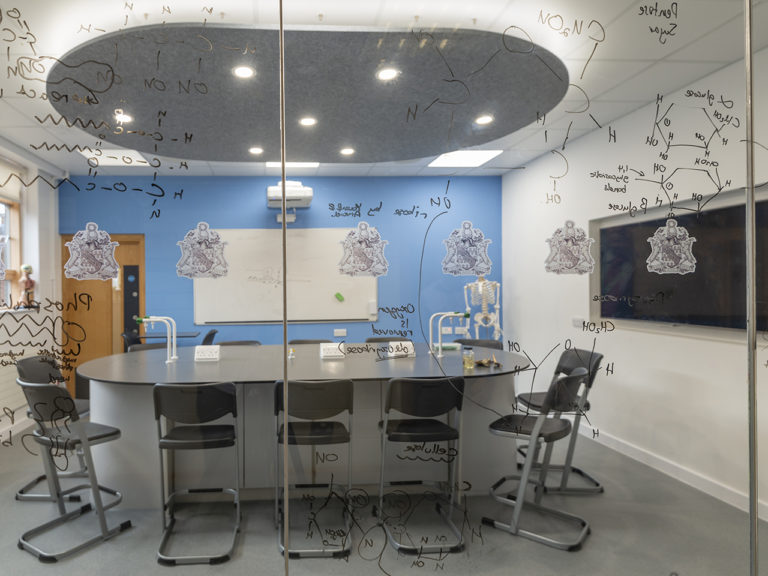
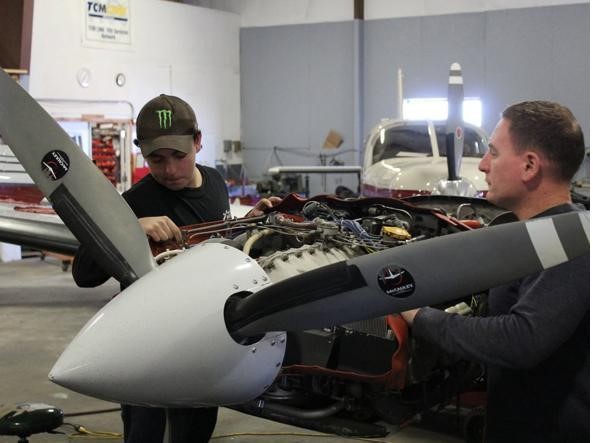
Secondary education environments
Big Picture Learning, (Providence, Rhode Island, USA) – Something that seems to tie all successful non-traditional spaces together, is their focus on a change in pedagogy, as well as environmental design. At Big Picture Learning, while the environment might seem radical, it is in fact, their approach to learning that is the most progressive.
“It is our vision that all students live lives of their own design, supported by caring mentors and equitable opportunities to achieve their greatest potential. We move forward prepared to activate the power of schools, systems & education through student-directed, real-world learning.”
“The building is created to nourish our pedagogy – aiming at a flexible and structured use of different learning environments.”
Non-traditional higher education
Melbourne’s School of Design at The University of Melbourne, (Melbourne, Australia) – If any educational environment should stand apart, it should be a school of design and architecture. Melbourne’s purpose-built school of design is thoughtfully and carefully cultivated to be an awe-inspiring space, which will serve to enthuse future designers.
Singapore’s Nanyang Technological University, (Singapore) – Nanyang is a master class in green architecture. Pushing the productivity envelope to the max, Singapore’s technological university aims to not only showcase all examples of its output within its own walls, but to display and demonstrate the work of its students on the outside, for all to see. Unique in its self-sufficiency, this university sets a cultural precedent.

